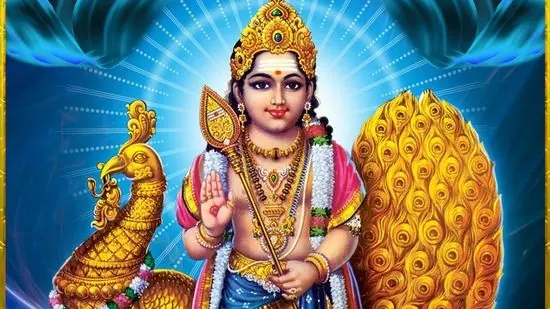Skanda Sashti, also recognized as Kanda Sashti, stands as a momentous festival revered by Hindus, particularly in the southern realms of India, dedicated fervently to Lord Murugan.
Skanda, a revered deity in Hindu pantheon, holds profound significance among Tamil Hindus. He is the offspring of the divine union between God Shiva and Goddess Parvati, known by various epithets such as Murugan, Kartikeyan, and Subramanya. Shasti, commonly referred to as ‘Shashti’, carries profound symbolism among Hindus, especially those belonging to the Tamil community, as it is a sacred ode to the veneration of Lord Murugan. Devotees embark upon fasting rituals on this sacred occasion, seeking the benevolence of their deity for a joyous and prosperous existence. The fasting period commences at dawn and concludes the subsequent day following devout offerings to the Sun God. Shasti manifests on the sixth day of each lunar fortnight in accordance with the revered Hindu calendar. Delve into its significance, from antiquity to contemporary narratives, by perusing further below. (Also explore: Adi Shankaracharya Jayanti 2024: Date, puja timings, historical narratives, and symbolic import)
Skanda Sashti commemorates the divine birth of Lord Kartikeya, or Subramanya, also known as Muruga in Tamil culture.
Skanda Sashti in May 2024 date
The esteemed Hindu festivity of Skanda Sashti shall grace the calendar on Monday, May 13. According to Drik Panchang, the propitious intervals to partake in the observance are outlined as follows:
Rituals of Skanda Sashti
Devotees may partake in the Skanda Sashti vrat either within the sanctity of their abodes or by pilgrimage to Murugan temples, offering heartfelt prayers and seeking celestial blessings. This sacred observance entails abstaining from carnivorous fare, intoxicants, and other worldly indulgences. It is also advisable to immerse oneself in the narrations or recitations extolling the glories of Lord Murugan and entwining the day with chants of his divine mantras.
Both the divine consort Parvati and the ascetic lord Shiva are venerated on Skanda Shashti. Devotees traditionally illuminate the sanctum with flickering candles, positioning the idol of Lord Skanda in a sanctified alcove. They may anoint the idol with sanctified water or milk, attire it in resplendent garments, and proffer sustenance or confections as sacred offerings to Lord Skanda. Furthermore, devotees often tender fervent appeals to Lord Skanda during Skanda Shashti, and some may opt to melodiously render the devotional hymn ‘Skanda Shashti Kavacham’ as an integral facet of their worship.
Significance of Skanda Sashti
Skanda Sashti venerates the celestial advent of Lord Kartikeya, hailed as Subramanya or Muruga in Tamil tradition. Manifesting on the sixth day of the luminous fortnight, or Shuklapaksha’s Ashti Tithi, within the month of Kartika (October-November), this occasion is steeped in venerable Hindu lore. Bearing the moniker derived from one of Lord Subramanya’s illustrious epithets, Lord Skanda, Skanda Sashti resonates with profound spiritual import.
Fasting on this day serves as an emblem of reverence towards Lord Subramanya. In the fervent heartlands of Tamil Nadu, where devotion to Muruga reigns supreme, Muruga temples orchestrate grandiose festivities during Skanda Sashti. This propitious juncture fosters communal unity through prayers, jubilation, and unwavering dedication, all orchestrated to exalt the celestial genesis of Lord Kartikeya.




